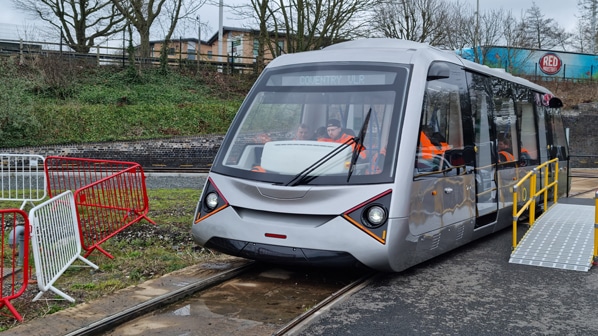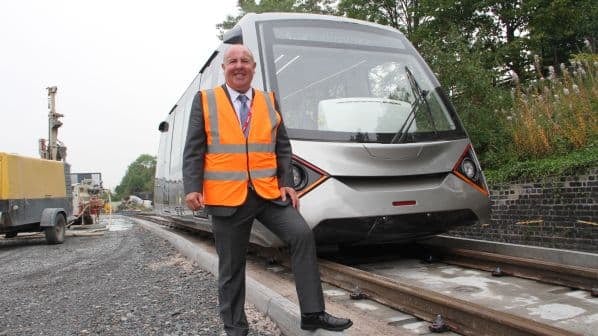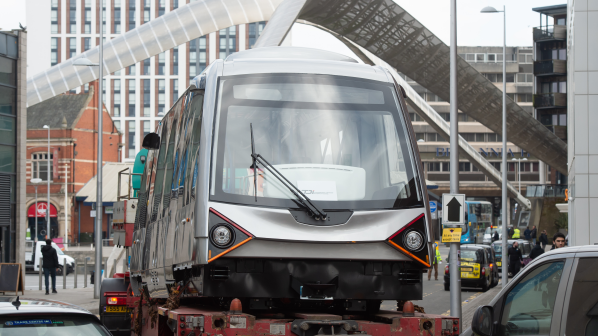COVENTRY City Council successfully demonstrated its Very Light Rail (VLR) urban mass transit system on March 11.
The prototype vehicle carried groups of around 50 invited guests along the 2.2km test track at the Black Country Innovative Manufacturing Organisation’s National Innovation Centre (BCIMO NIC) in Dudley, a town in the West Midlands region of Britain
Earlier in the day shadow minister for transport, Mr Stephen Morgan, and the Labour candidate for West Midlands Mayor, Mr Richard Parker, examined the system, following a similar visit by minister for transport Mr Huw Merriman the week before.
Coventry has developed a modular trackform that is much shallower than existing light rail track. This allows it to sit above buried utilities like water, sewage and gas pipes and power and telecoms cables. By avoiding the need to divert these utilities - a hugely expensive part of traditional light rail projects - the VLR system is expected to be much more affordable than existing methods of construction.
The prototype battery-powered vehicle, running at up to 40km/h on the Dudley test track, has capacity for up to 70 passengers, can travel up to 70km between charges, and is currently driver-operated. Coventry says it is looking at creating an autonomously-driven vehicle that will increase passenger capacity and service frequency.
Mr Colin Knight, Coventry City Council’s director of innovation, says the vehicle is currently undergoing tests on its patented bogies, a world-first design that allows them to negotiate 15m-radius curves virtually silently and with minimum wheel wear. Over 700 circuits were completed by the vehicle last week.
Knight says that there has been substantial interest in the VLR system from cities around the world, including from Canada and Thailand, as well as smaller British towns and cities. VLR’s potential ability to connect with existing light rail networks has attracted the attention of existing operators in both Britain and further afield.
Development funding for Coventry VLR is coming from the Department for Transport in a series of tranches. The next will allow construction to begin later this year on an 800m real-world double-track demonstration line in Coventry city centre, that could open next year.
Services would be operated with 17 battery-powered vehicles. Knight says that private-sector partners are likely to join the project as it transitions to a full-scale commercial enterprise.
For more details of the unique Coventry VLR trackform, see the feature in the March issue of IRJ. Digital subscribers can read it here.



